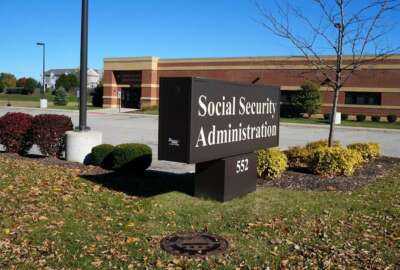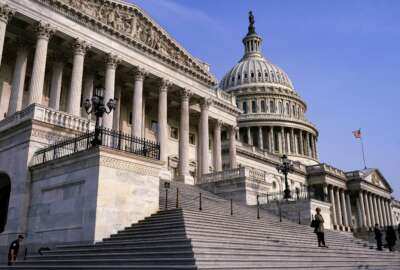Social Security Administration urging budget anomaly to avoid ‘devastating’ impacts
Without a 2025 budget increase for the Social Security Administration, Commissioner Martin O’Malley warned a hiring freeze and worsening services will come.
The Social Security Administration is ringing alarm bells over what would be “devastating” impacts of flat agency funding, as Congress looks to hammer out a continuing resolution by the end of the month and avoid a government shutdown.
During a hearing Wednesday, SSA Commissioner Martin O’Malley urged lawmakers on the Senate Budget Committee to include the White House’s full fiscal 2025 budget request of $15.4 billion for SSA operations as a budget anomaly in the case of a stopgap spending agreement. Currently, SSA is operating under a budget of $14.2 billion for 2024.
The Social Security Administration is facing a record high number of beneficiaries coupled with historically low agency staffing. But the agency has made some recent progress to reduce call wait times, limit backlogs and improve customer service. Without a budget increase on Oct. 1, though, O’Malley said SSA would see those promising improvements reverse course.
“We have now reduced the wait times on the 800 number by 50%,” O’Malley told the Senate committee members. “For the first time in recent memory, we have cleared more cases every week for 12 weeks in a row in the initial disability determinations than have been filed on the front end of that process. And we have reduced the appellate level hearing backlog to a 30-year low. But make no mistake about it, these recent gains will be short lived without your immediate attention and support.”
Time is running short for Congress to reach a government spending agreement for fiscal 2025. Both chambers must approve a stopgap appropriations bill by Sept. 30 to avoid a government shutdown. House Republicans’ six-month continuing resolution proposed earlier this week would keep the government funded, but it received strong pushback over a policy rider that would require states to obtain proof of citizenship when registering voters.
Though House speaker Mike Johnson said earlier this week that he would push forward with a vote, he ultimately postponed a vote on the stopgap bill Wednesday after it gained opposition from both parties, the Associated Press reported.
In a joint letter sent to leaders of the House and Senate appropriations committees, O’Malley warned the six-month continuing resolution would be “devastating” for the Social Security Administration. The flat funding, O’Malley said, would push the agency into a hiring freeze, leading to the loss of thousands of employees and a 50-year staffing low by the end of December. On top of that, the continuing resolution would exacerbate already existing challenges for the current SSA workforce.
“As we continue to lose staff, our already unacceptable customer service would significantly worsen,” O’Malley wrote Tuesday in the letter, obtained by Federal News Network. “While we are making common-sense service improvements wherever we can, a CR without the additional funding the administration has requested would leave us unable to rebuild our workforce, improve our performance and decrease lengthy wait times and backlogs.”
But so far, House and Senate appropriators appear to have different plans than what the Biden administration requested for the Social Security Administration’s budget next fiscal year.
On the House side, lawmakers are looking at a more than $500 million cut below SSA’s current spending levels. The proposal would put the agency at a $13.7 billion operations budget, rather than the current $14.2 billion for 2024.
O’Malley said the House’s plan would lead to a hiring freeze, a 3,400-employee staffing cut, an additional cut of 1,500 staff in Disability Determination Services, as well as 20 furlough days for SSA.
“We would only have a budget to really keep the lights on, not to do anything that would improve IT or improve resiliency, let alone customer service,” O’Malley said. “I’ve seen this agency somehow continue to keep its nose above water, but it would definitely be a huge hurt to people throughout the country for the customer service they’ve already paid for.”
The Senate’s spending plan, in contrast, would let SSA keep an additional $50 million for IT modernization and maintain the agency’s current allotment of overtime hours. The budget proposal, which advanced out of the appropriations committee in August, includes $14.7 billion for SSA’s administrative expenses — an increase of $509 million over 2024. But the proposal falls about $500 million short of the budget request and would lead to about 1,000 staff cuts.
Still, O’Malley said the Senate’s plan would be preferable over what the GOP-led House is currently considering for SSA.
“The only option before you that actually guarantees that we will restore customer service is really the President’s budget or the anomaly in the CR, but the Senate mark is much better,” O’Malley told the Senate committee.
During the committee hearing, Sens. Rick Scott (R-Fla.) and Chuck Grassley (R-Iowa) also questioned SSA’s hybrid work posture, asking O’Malley why the agency hasn’t required a full return to office for field office employees in public-facing positions.
The Social Security Administration updated its return-to-office plans in April, with the on-site requirements varying by position and office. But the agency made no changes for field office employees who have had a weekly requirement of three on-site days and two telework days since 2022.
O’Malley said the hybrid arrangement works well for field office employees, who have responsibilities that lend themselves to a combination of telework and in-person work.
“We are not only an entity that receives customers when they walk in or answers their calls when they call on the 800 number,” O’Malley said. “The same people in those field offices are also the ones that process the insurance claims, that need time away from the windows and away from the conversations to actually make real and effectuate the things for which people are applying … Time is required to process and put those things through.”
As a result of its current hybrid posture, which varies based on agency component, O’Malley reported that SSA has also seen a 5.7% increase in productivity over the last year.
Copyright © 2025 Federal News Network. All rights reserved. This website is not intended for users located within the European Economic Area.
Drew Friedman is a workforce, pay and benefits reporter for Federal News Network.
Follow @dfriedmanWFED






